
The Gibson SG is a solid-body electric guitar model introduced by Gibson in 1961, following on from the 1952 Gibson Les Paul. It remains in production today in many variations of the initial design. The SG Standard is Gibson's best-selling model of all time. SG stands for "solid guitar".

The Gibson Les Paul is a solid body electric guitar that was first sold by the Gibson Guitar Corporation in 1952. The guitar was designed by factory manager John Huis and his team with input from and endorsement by guitarist Les Paul. Its typical design features a solid mahogany body with a carved maple top and a single cutaway, a mahogany set-in neck with a rosewood fretboard, two pickups with independent volume and tone controls, and a stoptail bridge, although variants exist.

A single coil pickup is a type of magnetic transducer, or pickup, for the electric guitar and the electric bass. It electromagnetically converts the vibration of the strings to an electric signal. Single coil pickups are one of the two most popular designs, along with dual-coil or "humbucking" pickups.

The Gibson ES-335 is a semi-hollow body semi-acoustic guitar introduced by the Gibson Guitar Corporation as part of its ES series in 1958. It features a solid maple wood block running through the center of its body with upper bouts that are hollow and two violin-style f-holes cut into the top over the hollow chambers. Since its release, Gibson has released numerous variations of and other models based on the design of the ES-335.
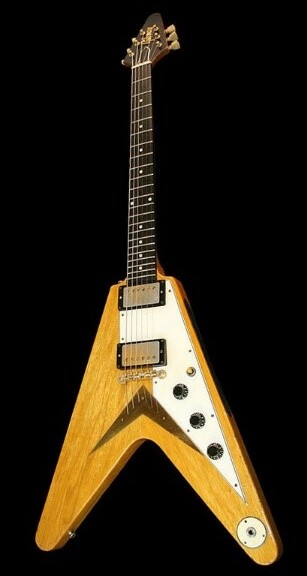
The Gibson Flying V is an electric guitar model that was originally introduced by Gibson in 1958. The Flying V offered a brand new, radical, "futuristic" body design, much like its siblings: the Explorer, which was released the same year, and the Moderne, which was designed in 1957 but not released until 1982. The initial run of guitars used a distinctive wood of the Limba tree marketed by Gibson under the trade name "korina"; later models used more conventional woods.

The Gibson Explorer is a type of electric guitar model by Gibson guitars, released in 1958. The Explorer offered a radical, "futuristic" body design, much like its siblings: the Flying V, which was released the same year, and the Moderne, which was designed in 1957 but not released until 1982. The Explorer was the final development of a prototype design that, years later, Gibson marketed under the name Futura.
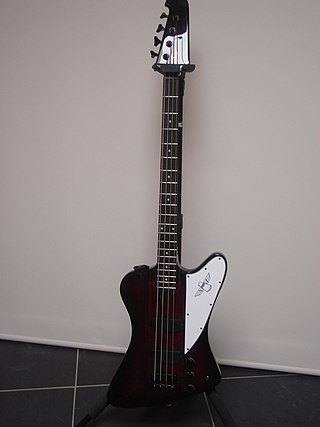
The Gibson Thunderbird is an electric bass guitar made by Gibson and Epiphone.

A multi-neck guitar is a guitar that has multiple fingerboard necks. They exist in both electric and acoustic versions. Examples of multi-neck guitars and lutes go back at least to the Renaissance.

The Gibson ES-330 is a thinline hollow-body electric guitar model produced by the Gibson Guitar Corporation. It was first introduced in 1959 and the guitar had the same dimensions as the ES-335.
The Gibson Les Paul Junior is a solid-body electric guitar introduced in 1954 as an affordable, entry-level Les Paul. It was first released with a single-cutaway body style; models with a double-cutaway body style were later introduced in 1958. The Junior continued through the first three years of the Les Paul/SG body redesign. The initial run was discontinued in 1963.
The Gibson Les Paul Custom is a higher-end variation of the Gibson Les Paul guitar. It was developed in 1953 after Gibson had introduced the Les Paul model in 1952.
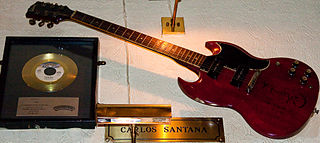
The Gibson SG Special is an electric guitar made by Gibson that has been manufactured since 1961.

The Gibson ES-333 is a semi hollow body electric guitar made by Gibson Guitar Corporation.
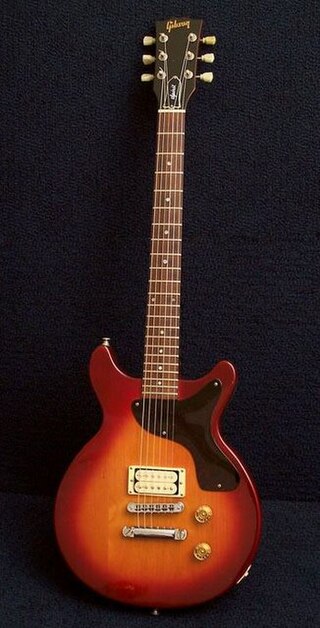
The Gibson Spirit was a guitar model sold under Gibson and Epiphone USA nameplates in the 1980s. This article does not refer to the made-in-China Spirit guitar sold under the Gibson Baldwin Music Education nameplate.

The Gibson ES-165 Herb Ellis is an Archtop guitar manufactured by the Gibson Guitar Corporation in Nashville Tennessee. By March 2013, it was no longer in production.
The Fender Telecaster, colloquially known as the Tele, is an electric guitar produced by Fender. Together with its sister model the Esquire, it was the world's first mass-produced, commercially successful solid-body electric guitar. Its simple yet effective design and revolutionary sound broke ground and set trends in electric guitar manufacturing and popular music. Many prominent rock musicians have been associated with the Telecaster for use in studio recording and live performances, most notably Bruce Springsteen, Luis Alberto Spinetta, Keith Richards and George Harrison.
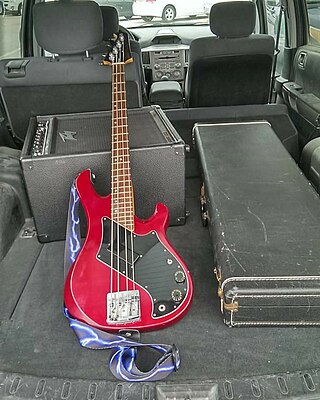
The Gibson Victory Bass was an electric bass guitar produced by Gibson Guitars from 1981 until 1986. It was a bass guitar variant of the Gibson Victory. It was not a successful model.

The Gibson ES-350T is an electric guitar model from Gibson Guitar Corporation, released in 1955. The ES-350T is a further development of the Gibson ES-350 model from 1948 and as such has a completely hollow body. The unique feature of the Gibson ES-350T at the time of its market introduction was the reduced width of the rims. As a result, the guitar has a thinner body compared to instruments with a resonance body that is of full thickness. The ES-350T, together with its sister models Gibson ES-225 TDN and Gibson Byrdland, was one of the first models of the thinline guitar type.
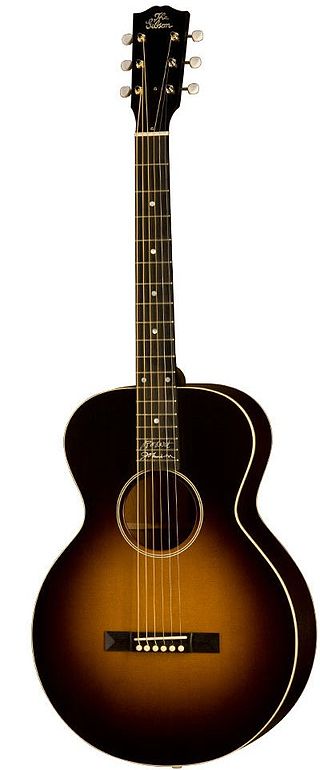
The Gibson L series is a series of small-body guitars produced and sold by Gibson Guitar Corporation in the early 20th century. The first guitars of this series, Gibson L-0 and Gibson L-1, were introduced first as arch-tops (1902), and later as flat tops in 1926. The L series was later gradually replaced by the LG series in the 1940s.
























